Efficient logistics begins with thoughtful planning, and Odoo 18 raises the bar with its powerful new Dispatch Management System. This feature is designed to simplify and streamline your entire shipping process. Whether you're managing a few deliveries or coordinating your whole fleet, Odoo now gives you more control, visibility, and automation than ever before.
At the heart of this system is load building, an innovative approach that groups products by carrier, assigns them to specific loading docks, and matches each shipment with the right delivery vehicle based on fleet capacity. No more guesswork or manual tracking! Paired with Odoo’s built-in fleet management tools, your business can now plan, dispatch, and monitor vehicle usage in real-time, ensuring your deliveries are accurate and on-time.
You’ll find the Dispatch Management option under the Settings menu in the Inventory app. Once enabled, it allows you to plan outbound shipments more effectively. You can organize product loads by carrier, assign them to loading docks, and manage vehicles according to availability and capacity, all in one place. This structured workflow minimizes errors, saves time, and improves your overall logistics performance.
First, we need to enable the Dispatch Management feature in the Inventory module. Please also ensure that key configurations such as multi-step routes, storage locations, and batch picking are activated in the inventory settings.
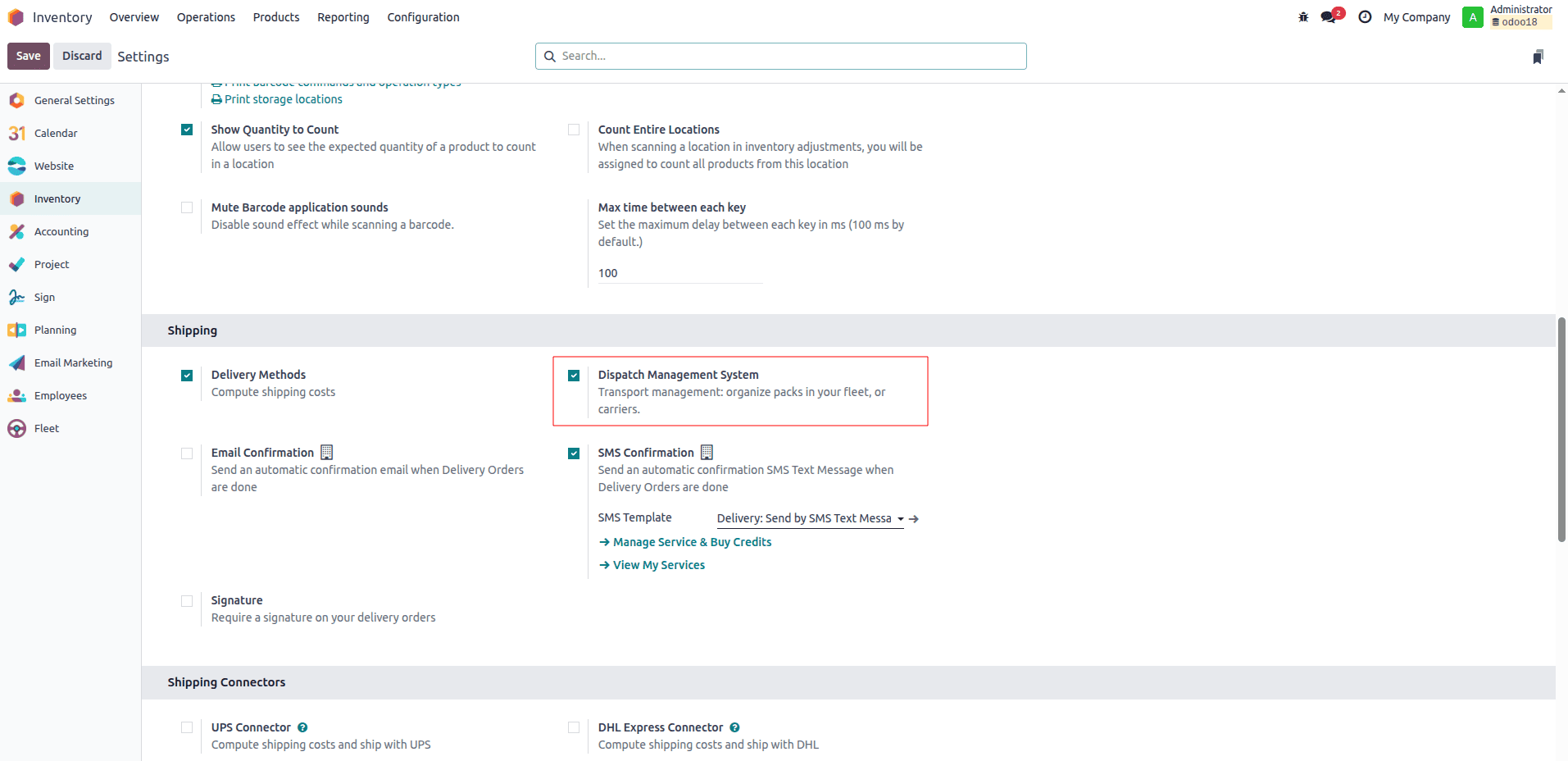
The Dispatch Management feature is integrated with the Fleet module to utilize in-house transport vehicles and their capacities. You can find related fields under the vehicle categories in the Fleet module, where you can define the capacity of each car accordingly.
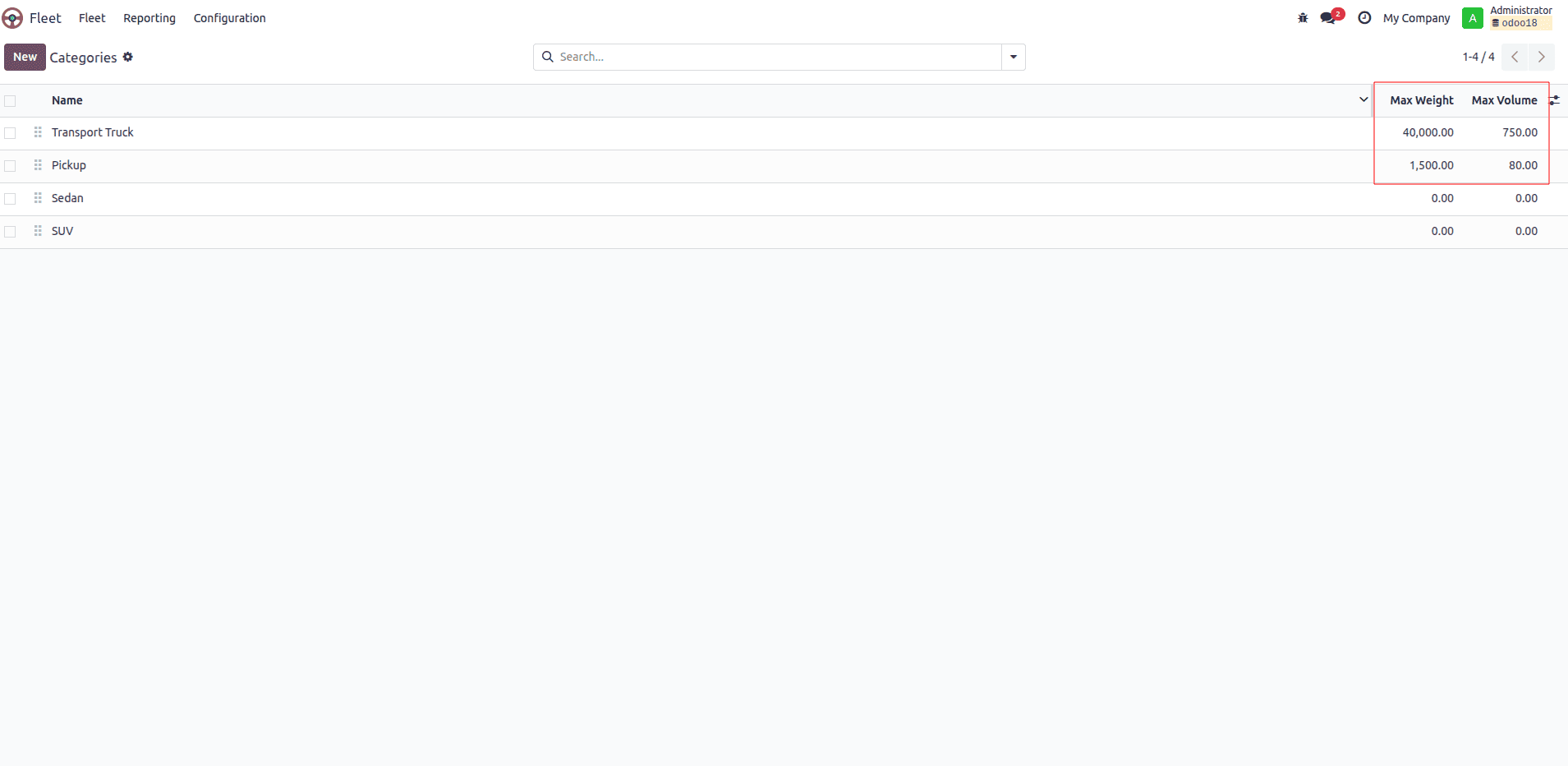
Now let's take a look at the delivery configuration. We need to enable two-step delivery, which allows for more streamlined operations in warehouses by providing flexibility to move stock to suitable docking or staging locations. Once enabled, we should configure the appropriate locations and sub-locations to support this workflow effectively.
In the location settings, there is a field that allows you to specify whether the location is a Dock Location or not.
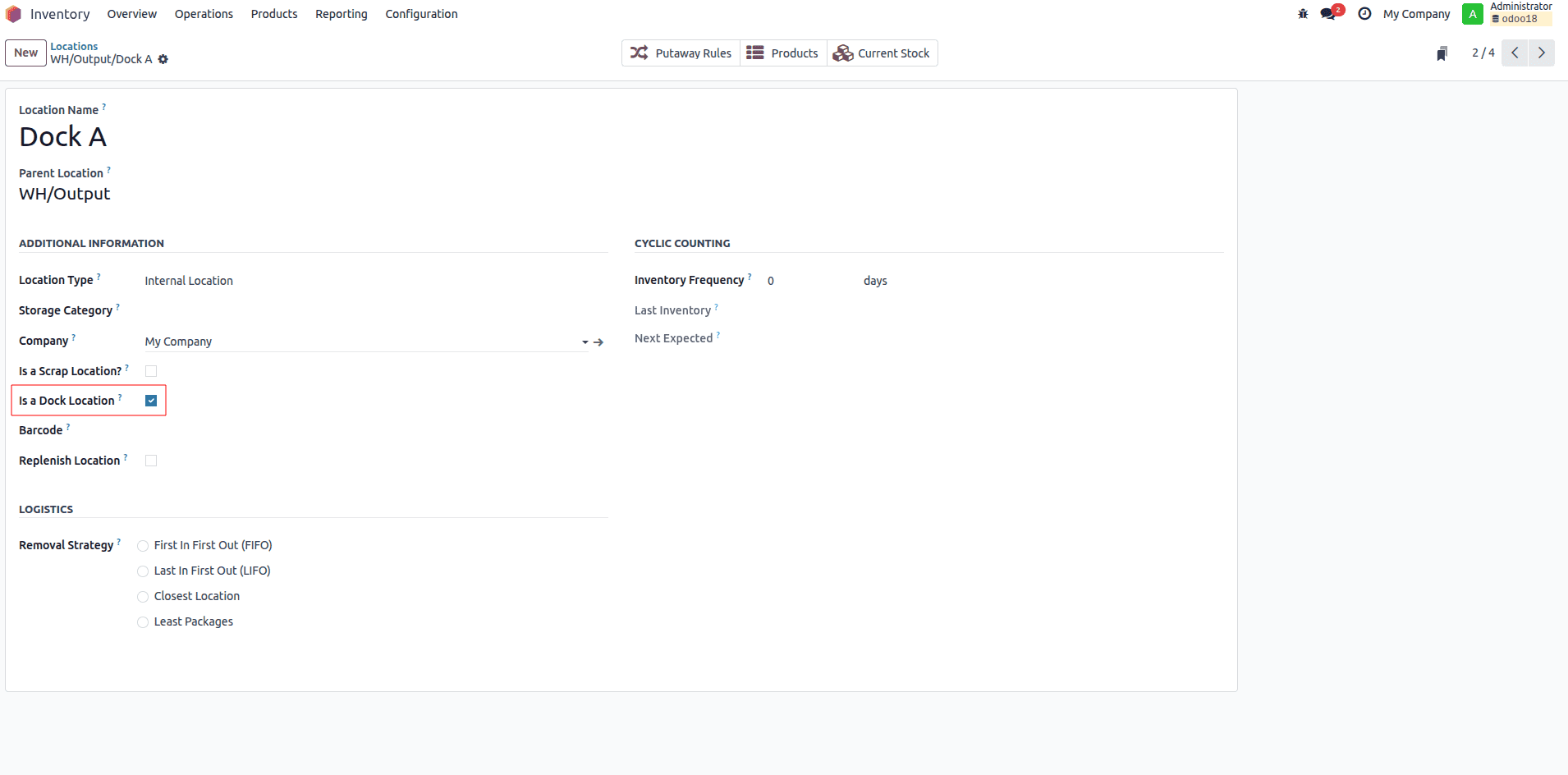
Let’s now explore how this feature works in action to streamline the delivery order process. Here, we manage batch transfers scheduled for delivery to customers, which contain products for which both weight and volume have been appropriately configured.
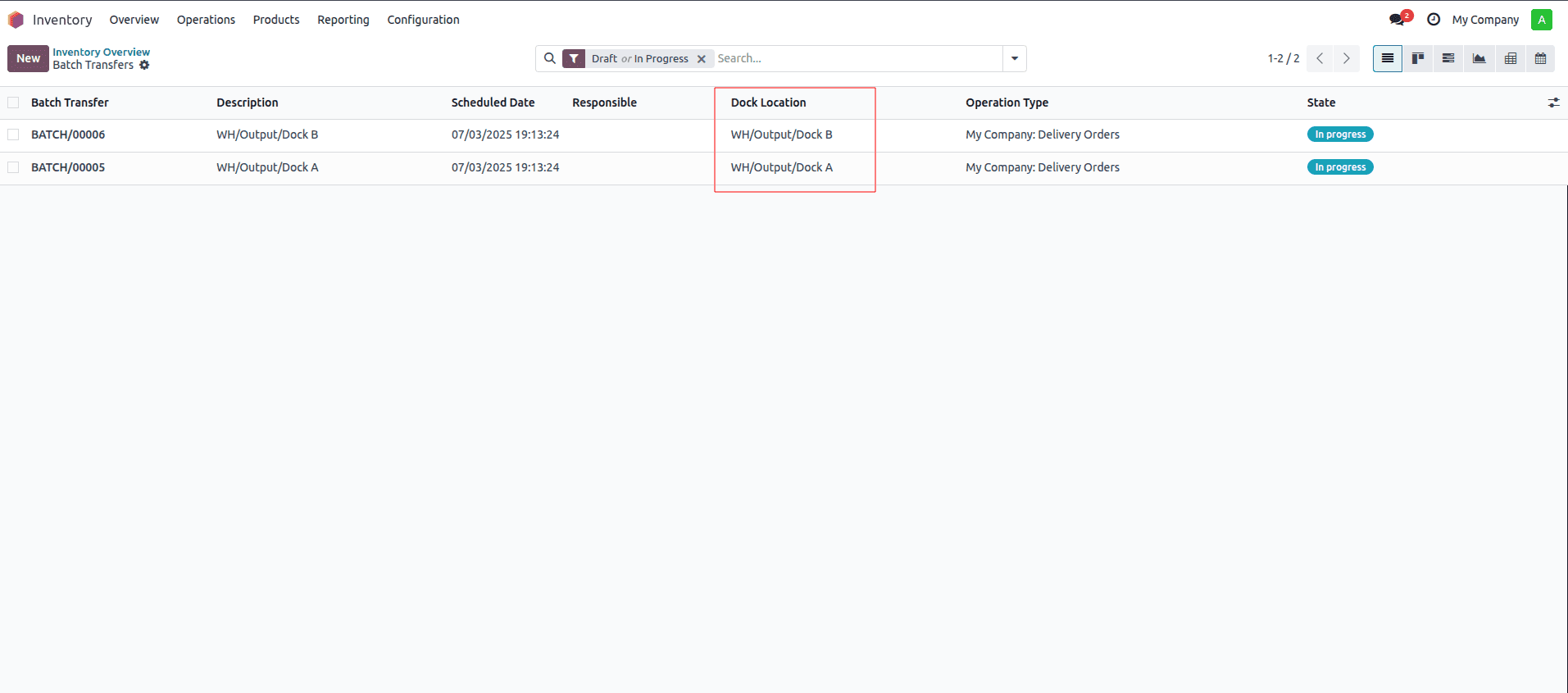
Here, you can see the column for docking locations. To fully utilize the Dispatch Management feature, products must first be transferred to these docking locations; only then can vehicles be assigned for delivery.
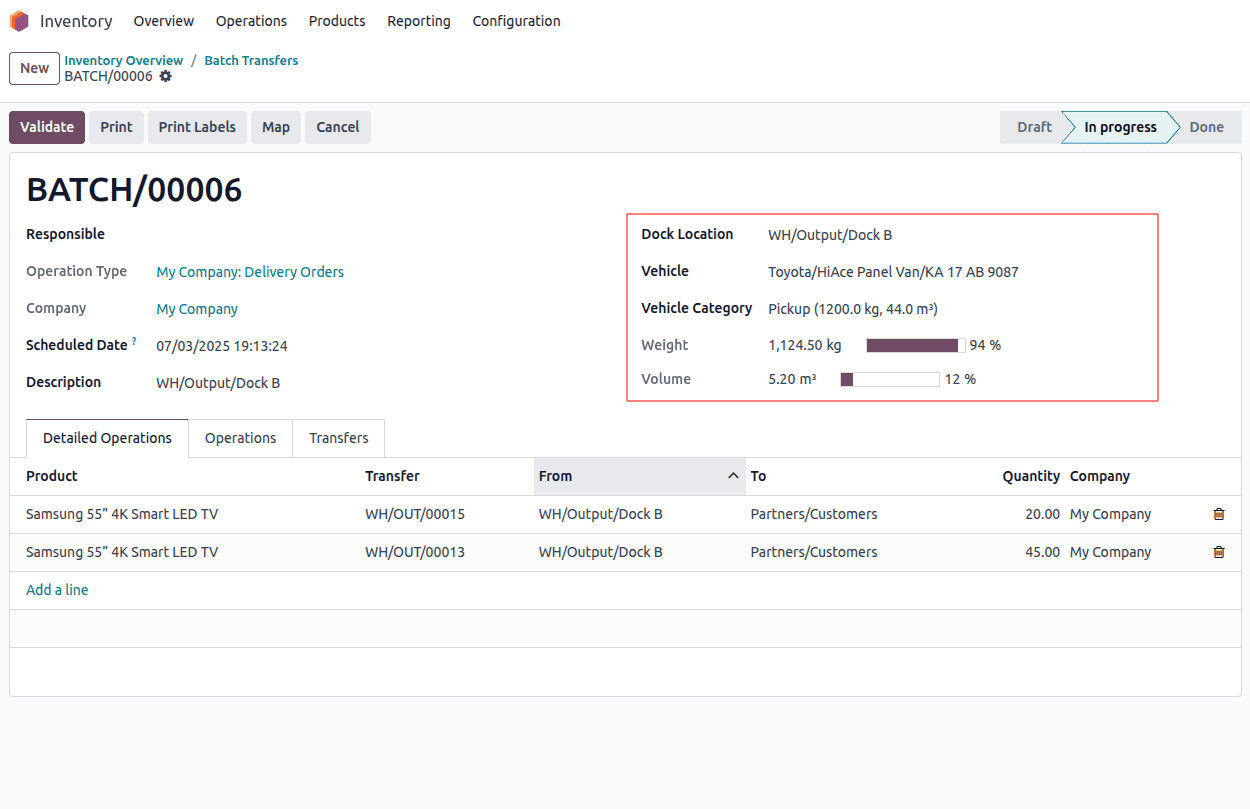
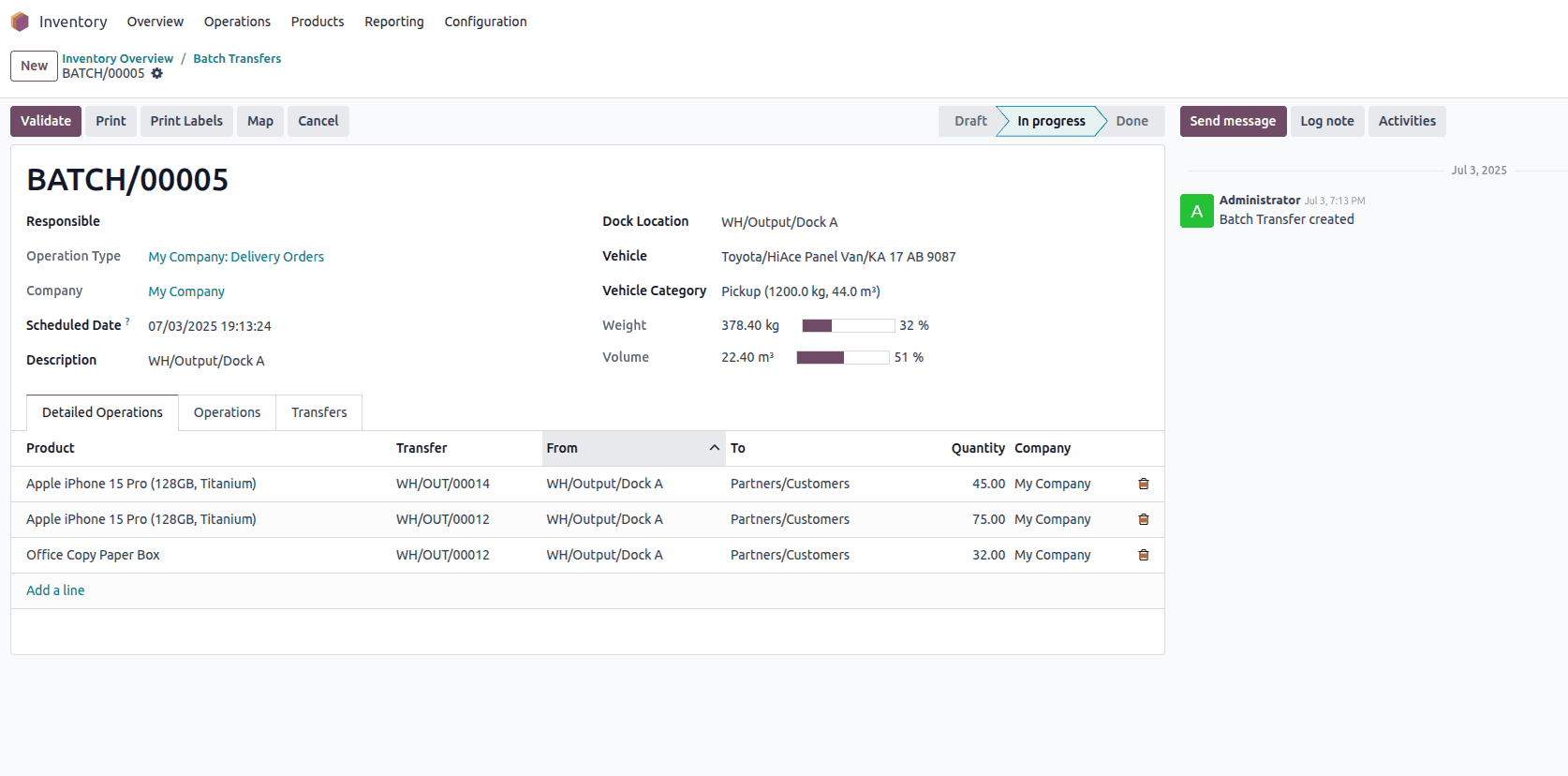
As shown in the image above, the exact weight and volume are displayed. These values are pulled directly from the product’s settings under the Logistics Section.
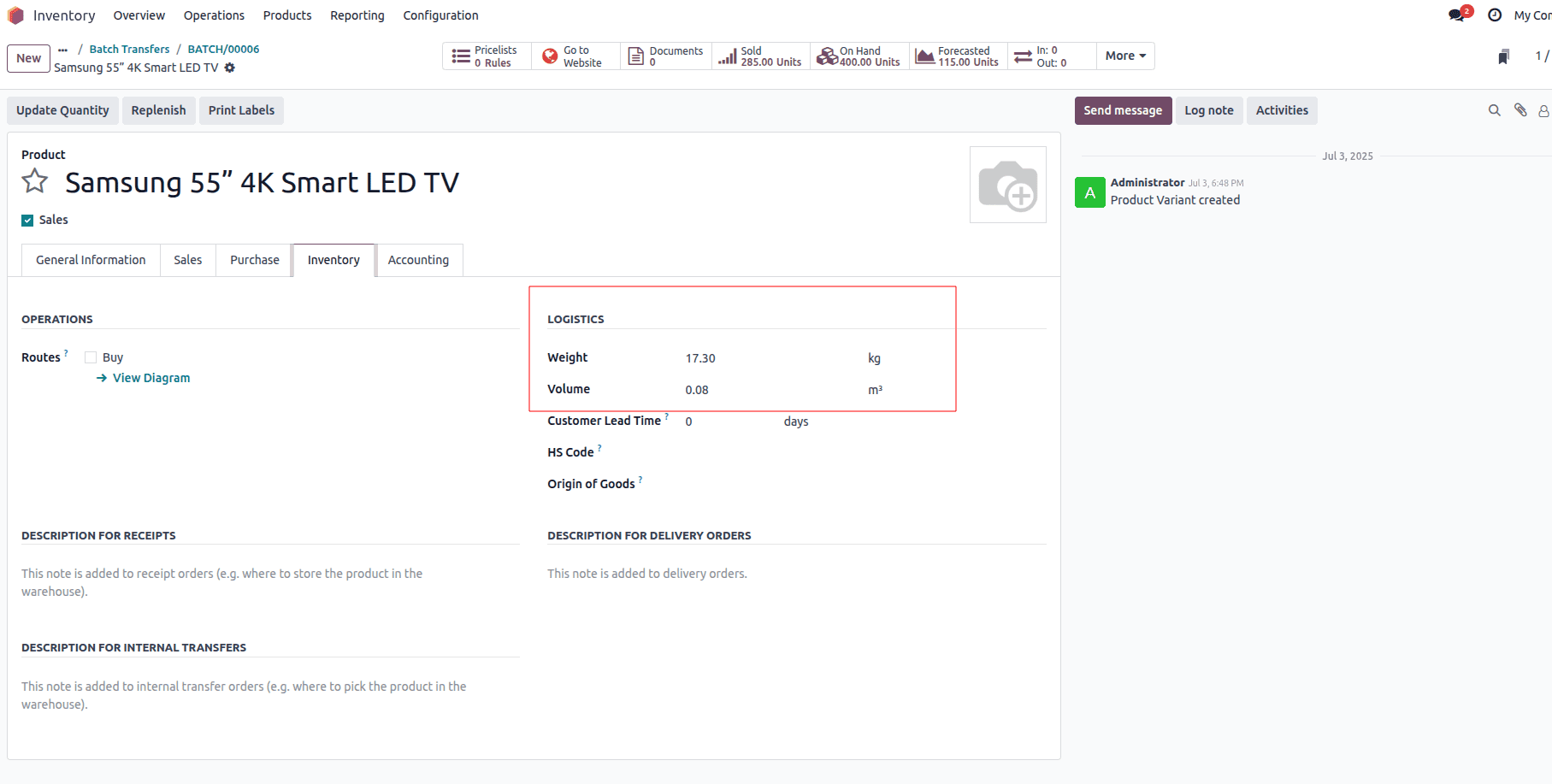
In the map view, you can see the delivery locations and use Google Maps integration to adjust stop locations. This feature is handy when working with Dispatch Management and fleet operations, as it helps optimize delivery routes and coordination.
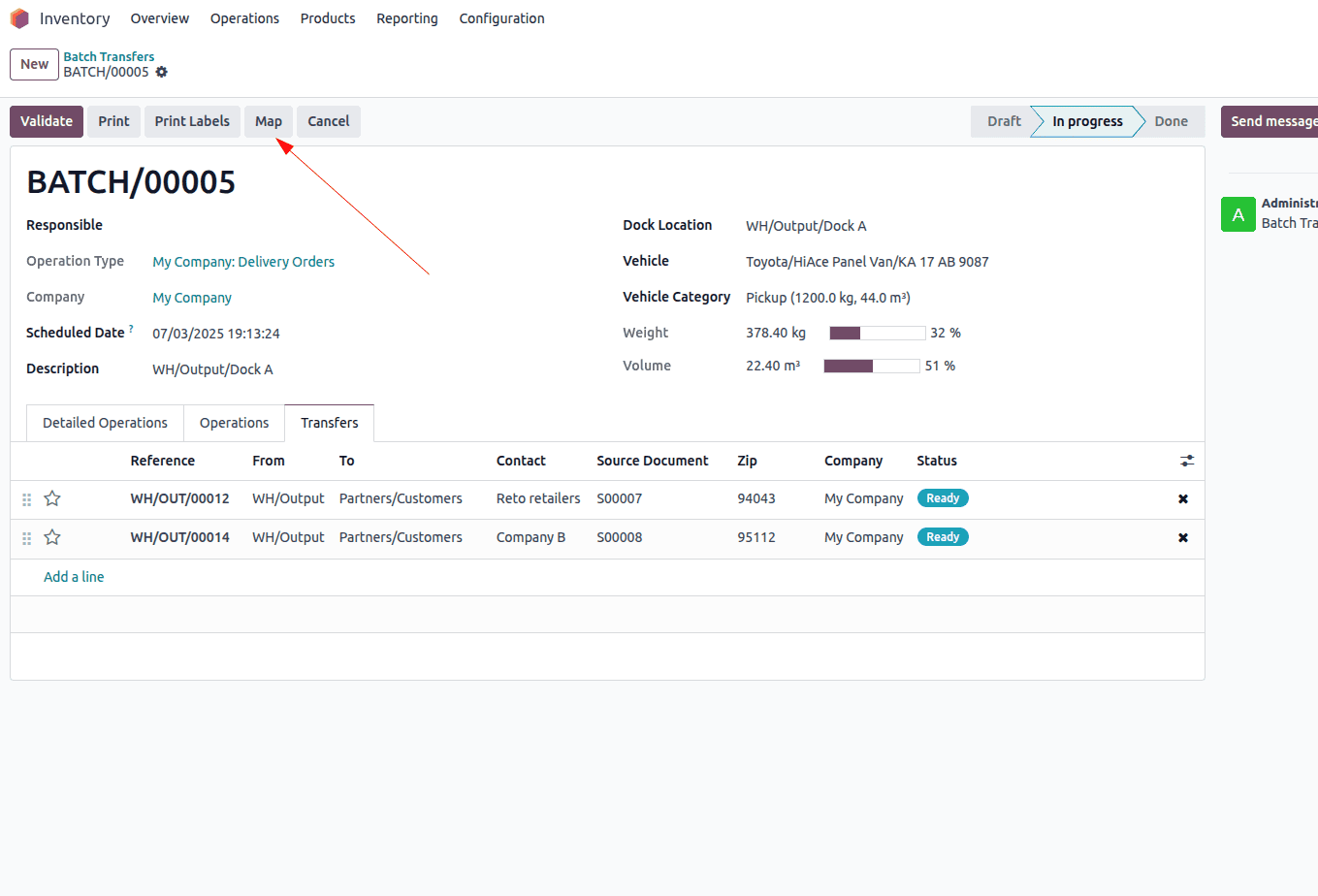
You can see the location dropped on the map view and be redirected to Google Maps.
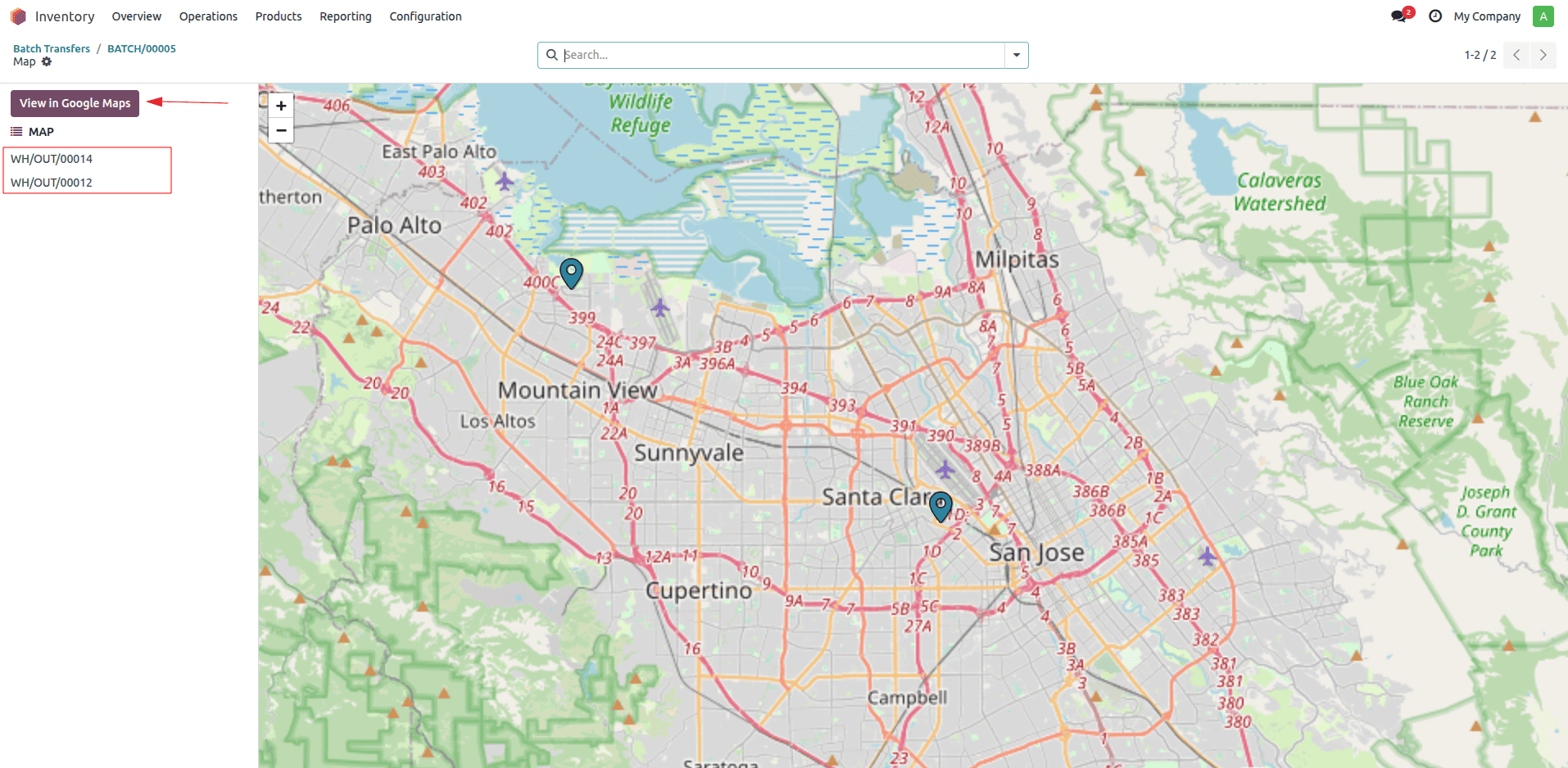
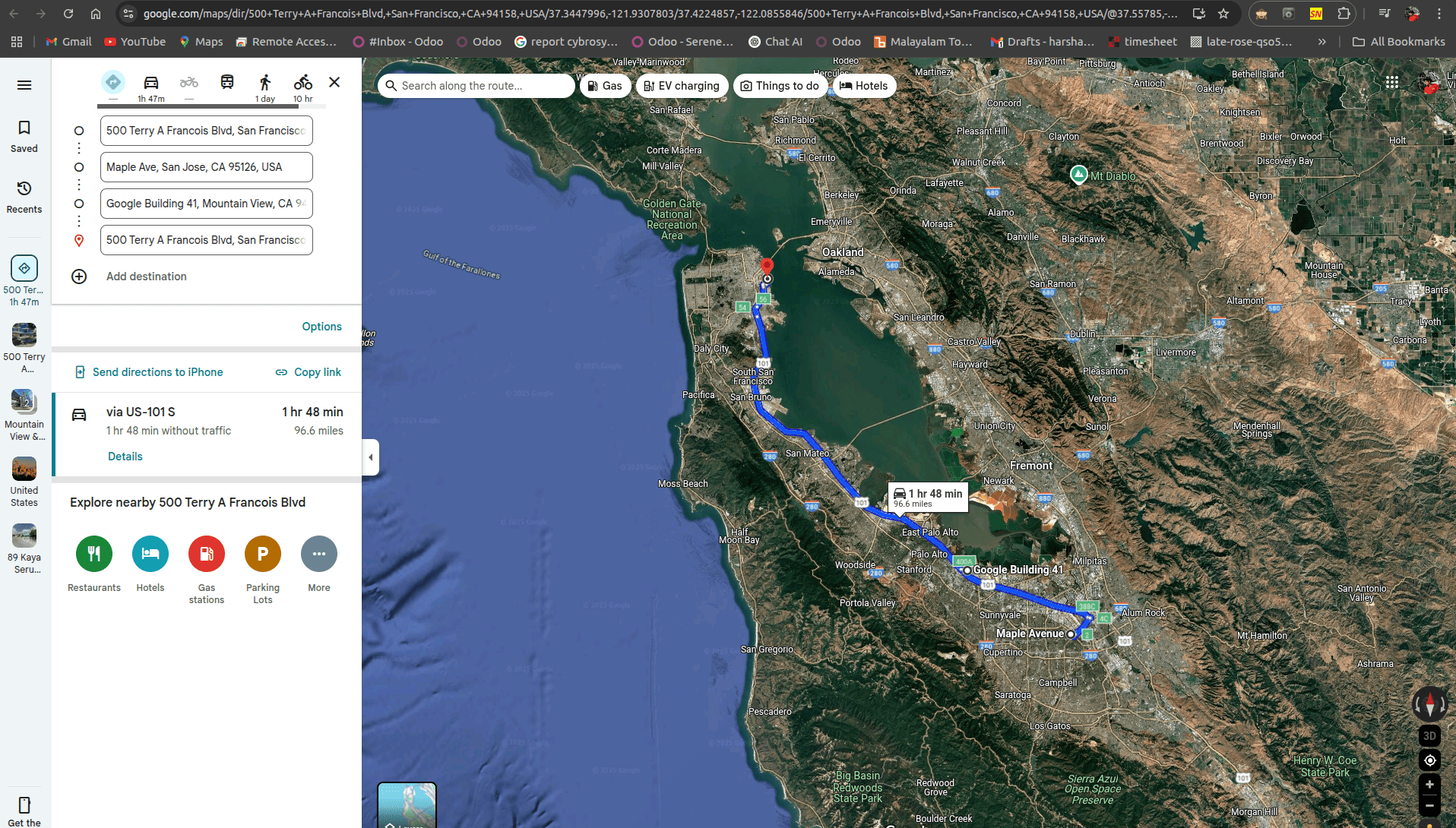
The locations displayed on the map are based on the delivery addresses entered in the delivery order fields, as well as the warehouse address defined for your company in Odoo.
This is Dispatch Management in action, enabling you to manage deliveries more efficiently by considering the weight and volume of each order and matching them with the appropriate vehicles in your fleet. With these logistics details automatically calculated from your product settings, Odoo helps ensure optimal vehicle usage and smoother delivery planning across your operations.
In conclusion, Dispatch Management in Odoo 18 provides a powerful and flexible solution for handling outgoing deliveries with precision and ease. It brings together route planning, vehicle assignment, carrier integration, and real-time delivery tracking—all within a single, unified system. By automating each step of the dispatch process, businesses can reduce manual errors, enhance coordination between warehouse and fleet teams, and gain complete visibility into where and when goods are being moved.
One of the key advantages is the ability to group deliveries by carrier and allocate them to specific loading docks, ensuring the efficient use of space and resources. Odoo also supports multi-warehouse setups, making it easy to manage operations across different locations. With integrated fleet management, companies can track their vehicles, optimize delivery routes, and even assign drivers based on availability and load capacity.
Overall, Odoo 18's Dispatch Management is not just a feature—it’s a complete logistics tool designed to simplify complex delivery operations. Whether you're running a local distribution or a large-scale logistics network, this system helps you deliver faster, smarter, and with greater control.
To read more about How to Manage Inventory Operation Types in Odoo 17, refer to our blog How to Manage Inventory Operation Types in Odoo 17.